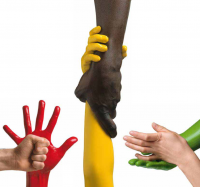About the violence, injuries and disabilities programme
Violence
 Violence is a public health challenge defined by the intentional use of physical force or power, threatened or actual, against oneself, another person, or against a group or community, that either results in, or has a high likelihood of resulting in, injury, death, psychological harm, maldevelopment or deprivation.
Violence is a public health challenge defined by the intentional use of physical force or power, threatened or actual, against oneself, another person, or against a group or community, that either results in, or has a high likelihood of resulting in, injury, death, psychological harm, maldevelopment or deprivation.
Injuries
Injuries are a major public health problem claiming more than 5 million lives every year and harming many millions more. It is caused by acute exposure to physical agents, such as mechanical energy, heat, electricity, chemicals and ionizing radiation.
Disabilities
Disability is an umbrella term, covering impairments, activity limitations and participation restrictions. An impairment is a problem in body function or structure; an activity limitation is a difficulty encountered by an individual in executing a task or action; and a participation restriction is a problem experienced by an individual in involvement in life situations. Thus disability is a complex phenomenon, reflecting an interaction between features of a person’s body and the features of the society in which he or she lives.
The violence, injuries and disability programme works with Member States to prevent injuries and violence, to mitigate their consequences and to enhance the quality of life for persons with disabilities irrespective of the causes.
It does so by:
raising awareness of the magnitude and consequence of injuries, violence and disabilityanalysing and disseminating informationfostering multisectoral networks and partnerships.
The programme also supports national, regional and global efforts to:
improve data collectiondevelop evidence-based approaches to injury and violence prevention, control and rehabilitationdisseminate proven and promising interventionsimprove services for persons with disabilities, as well as victims and survivors of injuries and violence, and their familiesenhance teaching and training programmescreate multidisciplinary policies and action plans.








